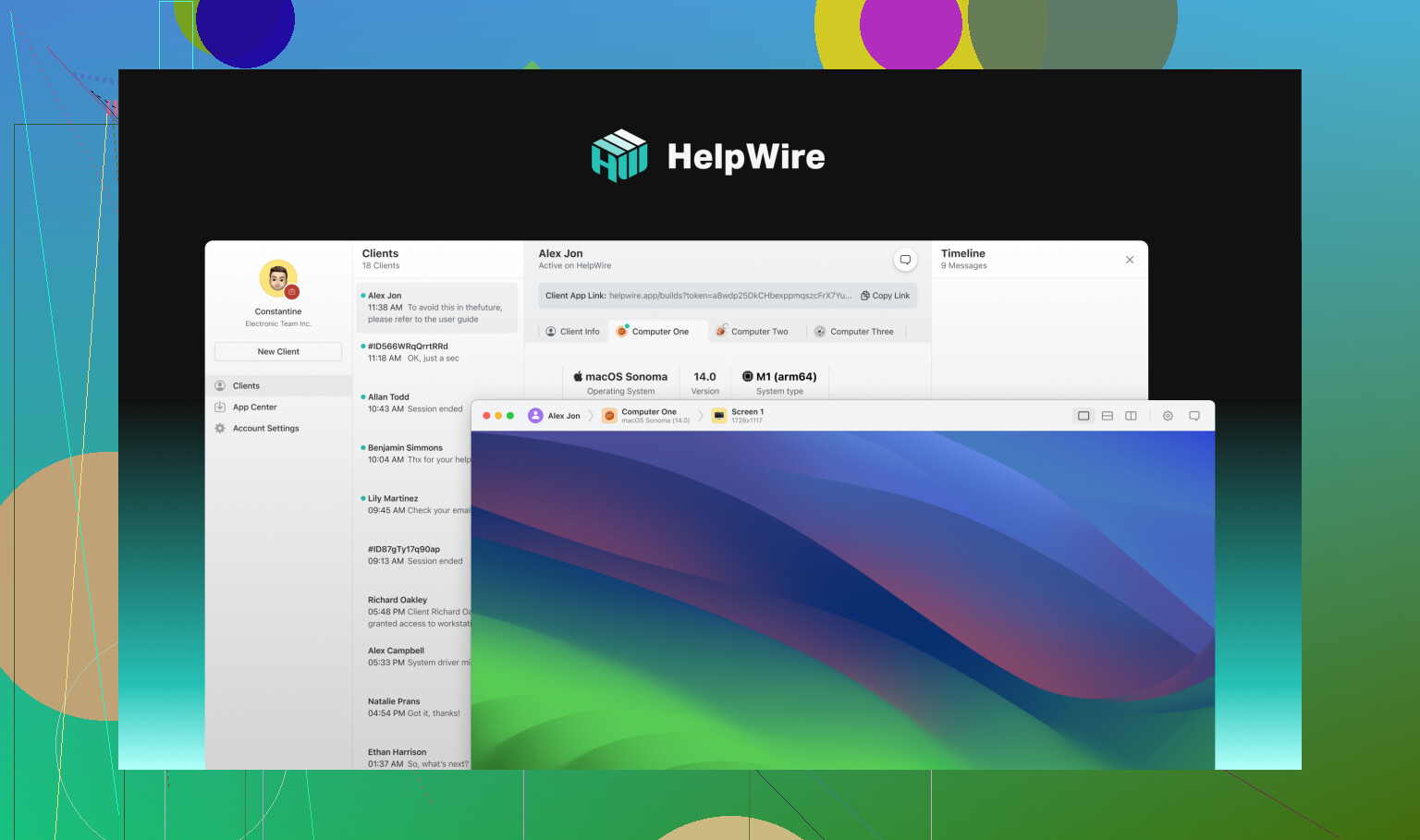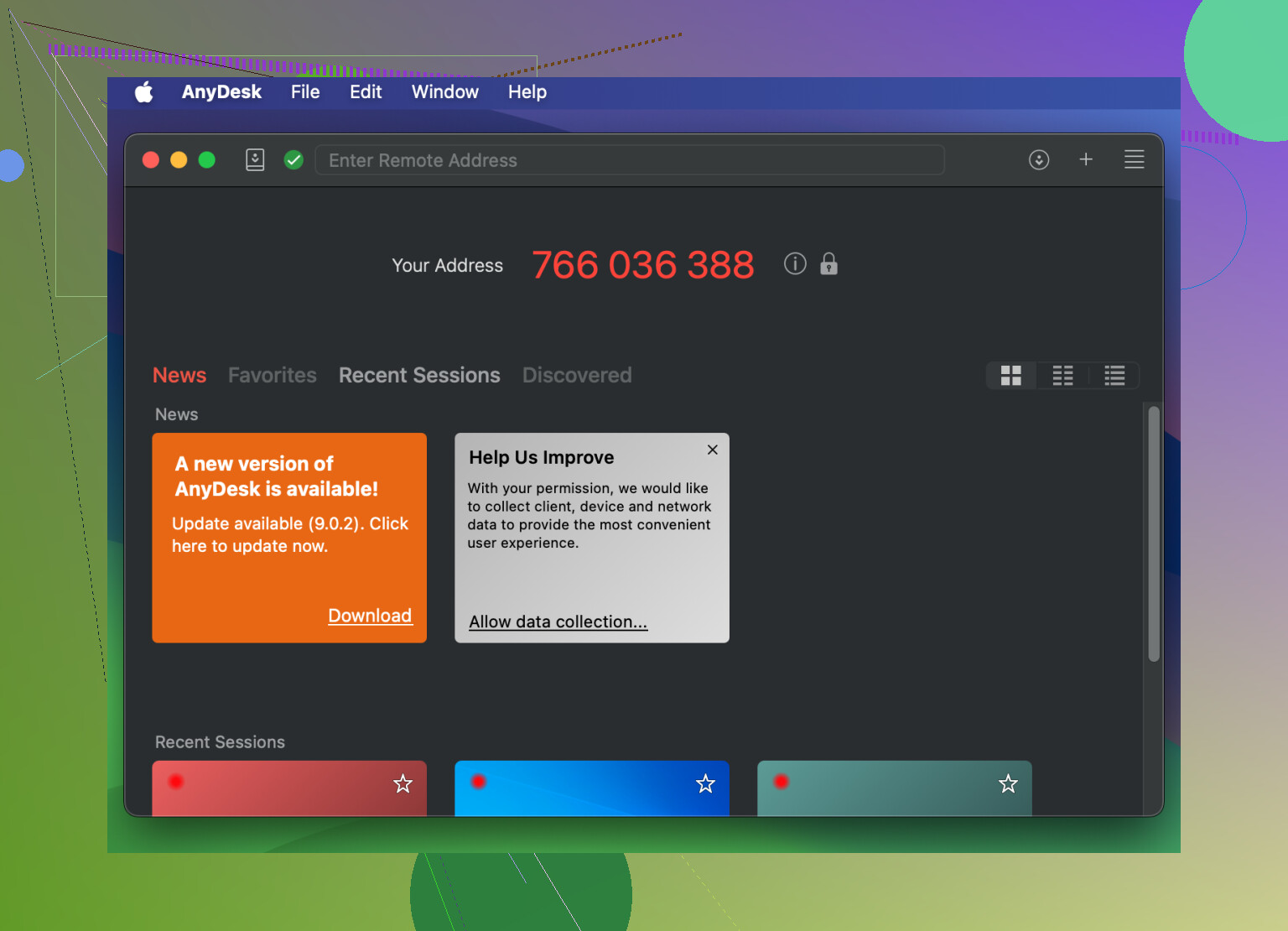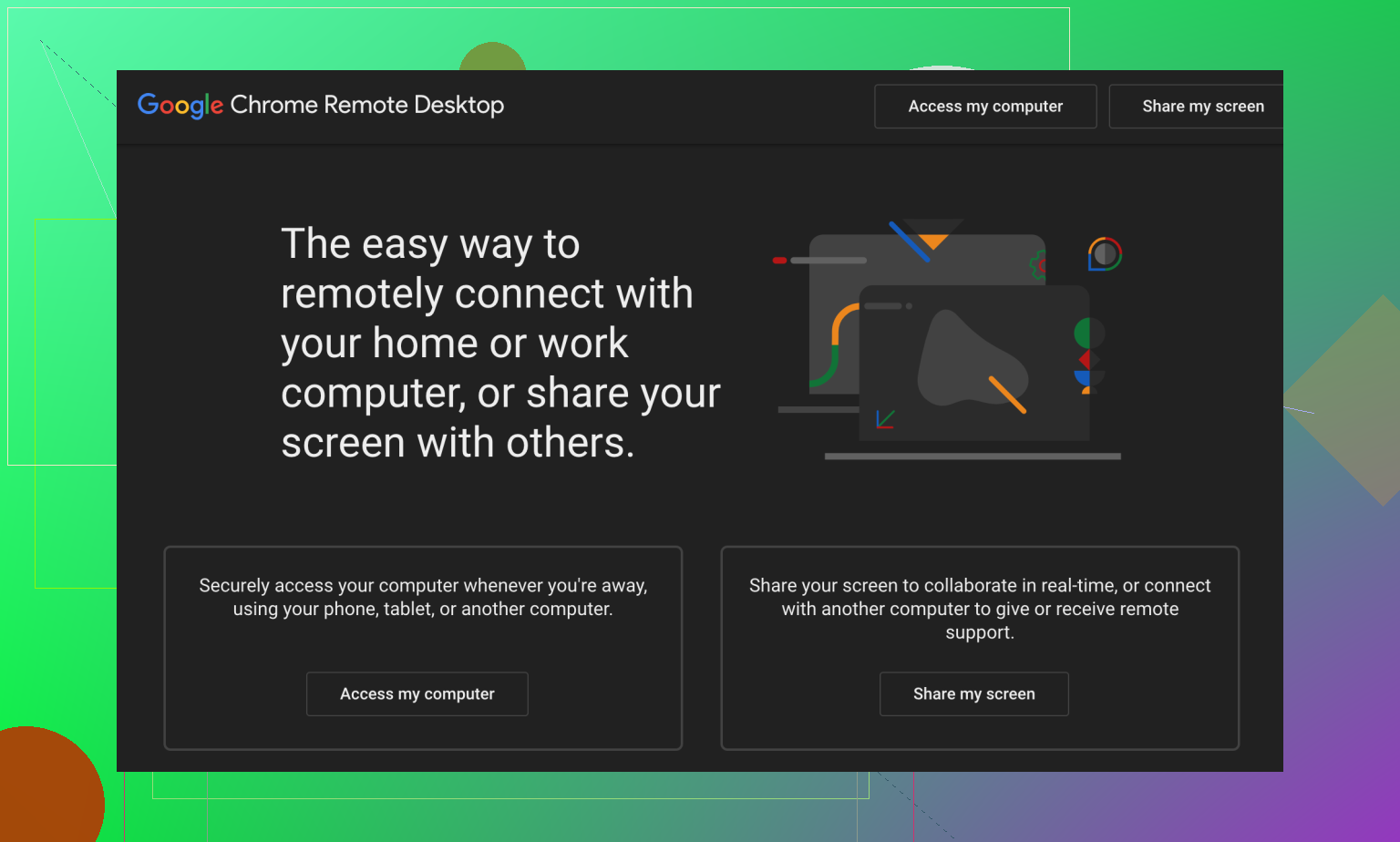I’ve been using RealVNC for remote desktop access, but I’ve been running into some issues with lag and occasional disconnects. I’m looking for a reliable alternative that works well for personal or small business use. Has anyone switched from RealVNC to something better? Your suggestions would really help me out.
Swapping Out RealVNC? Here’s How I Survived the Switch
I was neck-deep in remote desktop chaos not too long ago, and figured maybe it’s time to share what worked (and what didn’t) when bailing on RealVNC. If your eyeballs are glazed over from comparing features, you’re not alone—been there. Here’s what I actually tried out, in all its unfiltered glory.
 HelpWire: My Hidden Gem
HelpWire: My Hidden Gem
A few months back, I tripped over HelpWire, best free alternative to RealVNC while hunting for something that didn’t make my brain hurt to install. I honestly thought, “Oh, another random tool, probably clunky,” but ended up being pleasantly surprised.
- Set-Up Experience: I barely had to read anything. It feels straight-up plug-and-play, with none of those endless port-forwarding shenanigans.
- Security: End-to-end encryption is here, ticking the paranoia box, and I haven’t seen any weird connection dropouts yet.
- Platforms: Mac at work, Linux experiments at home, and the occasional dusty Windows box—HelpWire’s covered each one.
- Unattended Mode: This actually works as advertised—no more nagging people to click “accept.”
Gripe? The crowd using it feels pretty niche. If you want pages of obscure troubleshooting threads, you won’t find them here. I guess that’s what Telegram DMs are for.
 AnyDesk: For the Speed Addicts
AnyDesk: For the Speed Addicts
Listen, if your WiFi runs on potato mode and lag makes you irrationally angry, AnyDesk will feel like a cold soda on a July day.
- Performance: Streams at you like it thinks it’s Netflix. Mouse and keyboard delay? Barely there.
- Interface: Even your uncle who types with two fingers could figure this out. Seriously, what’s with all the rounded corners?
- Price: As long as you aren’t using it to run a helpdesk empire, the free version is enough. Paywall only pops up if you get fancy.
But let’s be honest—if you’re eyeing features like session archives or trying to run a call center, be ready to pony up.
 Chrome Remote Desktop: Barebones But Reliable
Chrome Remote Desktop: Barebones But Reliable
If you, like me, have ever set up a VPN just to check if you left a doc open on your home PC—and immediately regretted your life choices—Chrome Remote Desktop is probably your speed.
- Setup: There isn’t one, really. Just Chrome, which you already have open with seventeen tabs.
- Access: Works from anywhere with a browser. Phone? Yep. Library computer? Sure (don’t, though).
- Zero Cost: Free is a good price.
Big con: it’s missing all the bells and whistles. No quick file sharing, no fancy screen juggling. It’s like the rice cakes of remote access—basic, but sometimes that’s all you want.
 TigerVNC: Old School in the Best Way
TigerVNC: Old School in the Best Way
Not gonna lie, TigerVNC brings me back to the dusty corners of open-source forums. It just works, and if you’re comfortable futzing with configs and don’t need unicorn-level polish, it’s actually awesome.
- Cross-Platform: Windows, Linux, macOS. If it has a screen, you’ll probably get it to run.
- Speed & Security: Pleasantly surprised by both. Felt like SSHing into my server the first time—nerdy, but solid.
Don’t expect a wizard for setup, though. This is the one your bearded IT friend recommends, and you’ll need to Google what “xstartup” means at least once.
TL;DR
- HelpWire: For minimal effort and maximum security, especially if you kinda hate fiddling with stuff.
- AnyDesk: All about speed and smoothness, just avoid the subscription trap unless you need those extras.
- Chrome Remote Desktop: Zero-dollar, no-frills backup plan.
- TigerVNC: For those in the “I compiled my own kernel” club.
There’s no one-size-fits-all—but maybe this helps narrow the search. Anyone used something wilder? Let me know if you want a deeper dive into any tool (screenshots, war stories, or the inevitable rant).
Not gonna lie, I side-eye anyone listing TigerVNC in 2024 and calling it a “hidden gem” (sorry, @mikeappsreviewer, y’all old-school types live on another planet). Look, if lag and random disconnects are giving you RealVNC-induced trauma, dumping another ancient VNC flavor on there will prob just move the pain around. File that one under “things that work if you squint hard enough,” IMHO.
Now, HelpWire is definitely less of a mainstream meme but dude, for true plug-and-play, it’s a winner. I swapped out old TeamViewer installs for HelpWire on my folks’ laptops, less tech support screaming for both sides. Security setup was a non-event, no fiddling with firewall voodoo, which is a massive upgrade over my last VNC setup.
But since the thread’s all about choices, let’s say you want that brand trust/hype, you can drop Chrome Remote Desktop (it’s “fine” if you like bland cereal) or AnyDesk (fast but borderline scammy with those “oops, commercial use detected” popups). Still, for small shop use? HelpWire’s solid, especially for cross-OS access and zero-friction unattended mode. If you ever need better support threads, yeah, it’s a ghost town compared to the AnyDesks of the world, but at least you aren’t digging through posts from 2008.
Bottom line: HelpWire’s my pick if you’re over VNC and don’t want to sell your soul to a big name. If you must go FOSS, just be ready for webinars in the terminal.
Let’s just cut to the chase: RealVNC has been resting on its (aging) laurels for years and if you’re hitting lag and those weird ghost disconnects, you’re far from alone. Honestly, I get why @mikeappsreviewer and @nachtdromer lean hard into HelpWire and AnyDesk in their writeups—it’s about time someone echoed the pain of Baby Boomer-tier VNC tools in 2024. But do I agree it’s the ONLY answer? Eh, not quite.
Here’s my two cents after too many hours of yelling at screens:
HelpWire is the new kid, but it’s criminally underhyped. If you don’t have the patience for reading through a Linux manpage at 2am just to get a remote session up, it’s stupidly quick to set up and gets out of your way. I will say, the “niche” factor is real—don’t expect millions of Reddit threads, but honestly that’s a plus if you’re tired of copy-pasting bad advice anyway. If all you need is solid, secure access across Windows, Mac, Linux (and without your router having a panic attack), this is kind of a no-brainer.
But, and here’s where I poke the bear: if you’re super FOSS-minded or want to run it on oddball devices, maybe TigerVNC like @mikeappsreviewer suggested isn’t quite deadweight yet. Yes, it’s a dinosaur, yes, you’ll probably have to Google more than you want, but it still handles weird edge cases if you’re stubborn or actually like troubleshooting for sport.
AnyDesk is the sweet spot if you want speed and don’t mind the “are you secretly using this for commercial stuff?” popups. Chrome Remote Desktop is… fine? “Fine” as in, toast with nothing on it. It’ll work, but if you want file transfers or granular controls, you’ll be sighing.
If you’re on a shoestring, HelpWire is the least painful, and it feels modern (which, let’s be real, is rare in this honestly ancient corner of IT). For power users happy to tinker, TigerVNC or even xrdp can be alternatives, but you’ll basically spend your weekends yelling at config files.
TLDR: Ditch RealVNC for something like HelpWire if you value your sanity or like things that Just Work™. Try AnyDesk if you want flashy fast. Chrome RD if you literally don’t care and want barebones. TigerVNC if you’re a masochist (no judgment, we’ve all been there).


